Veterinary Division
Staff Meeting Every Monday, 3pm
Alongside the Behavioral Division, the Veterinary Division forms the core of all observational and continuing research operations on Isla Panadera.
The staff of the Veterinary Department are responsible for monitoring the health of every asset on the island. The division is divided into four departments: Hatchery, Pediatrics, Laboratory and Field.
Hatchery
This department oversees the care of eggs from the time they are released from Embryonics through hatching. Once hatched, the assets are transferred immediately to pediatrics.
The Hatchery department consists of an incubation center capable of caring for up to 64 eggs at any give time, with eight independently controlled and monitored incubators each capable of holding eight eggs. This allows for further research into comparative experiments in regards to climate effects upon the hatching of similar assets with differing genetic variables.
Pediatrics
Director of Science Operations
Eduardo Juarez
Director of Research & Assets
Samantha Freeman
Field Manager
Alex Jesson
Laboratory Manager
Levi Moser
Paleopediatrics Manager
Jacob Els
Hatchery Manager
Julia Beale
Also called the Nursery by our staff, this department is responsible for the care of successfully hatched assets. Staff in this department monitor the growth and changes within each asset in regards to each unique experimentation and report their findings regularly to the genetics department.
Pediatrics staff work closely with the Behavioral Division to research interactions between infant assets as well as exposing infants to adults of similar and differing species in order to observe reactions and any bonding potential for future observational experimentation.
Pediatrics consists of three corridors made up of individual enclosures of various size. Assets are progressed up sizes in order to allow them to adjust to moves around the complex and to adjust to their required care.
Laboratory
The laboratory also serves as the complex veterinary facility. It is here that juvenile assets are cared for and studied before release into the wild (for herbivores) or communal observation pens (for carnivores and some herbivores under further study). This department is responsible for observation and care of juvenile through adult assets under their care as well as the testing of samples and other laboratory based research into material provided by the other departments. There are operation and examination rooms within this department capable of containing all but the largest of species on the island.
Field Operations
The Field Department is responsible for the ongoing care of those assets released into the wild of Isla Panadera as well as the monitoring and care of mammalian prey animals relocated to the island. The staff of the Field Department work closely with the Laboratory Department to identify and care for physical needs of assets and livestock including the administration of surgical care, medication, dietary supplementation and in conjunction with the Behavioral Division the monitoring of any unprovoked reproduction.
Field operations has at its disposal several jeeps arranged with all necessary emergency medical supplies in quantities sufficient for the care of any wounded or ill asset. In cases requiring the relocation of assets to observational care at the main complex, lift trucks, a large cage truck and if needed a sky crane helecopter can be put into use. Additional supplies and support personnel are positioned at each Observation Center where at least one veterinary staff person is to be on staff at any time in order to monitor for emergencies.
